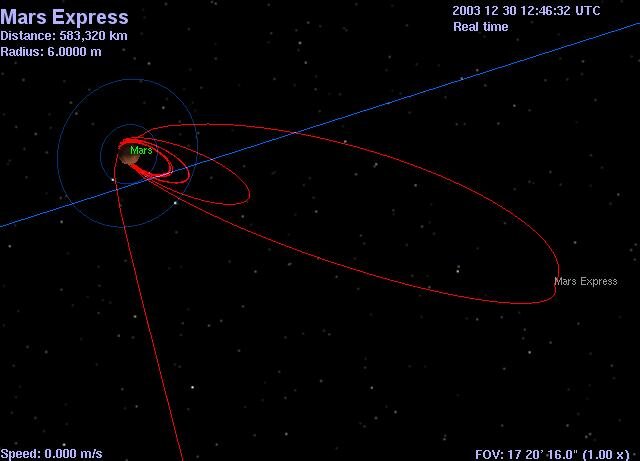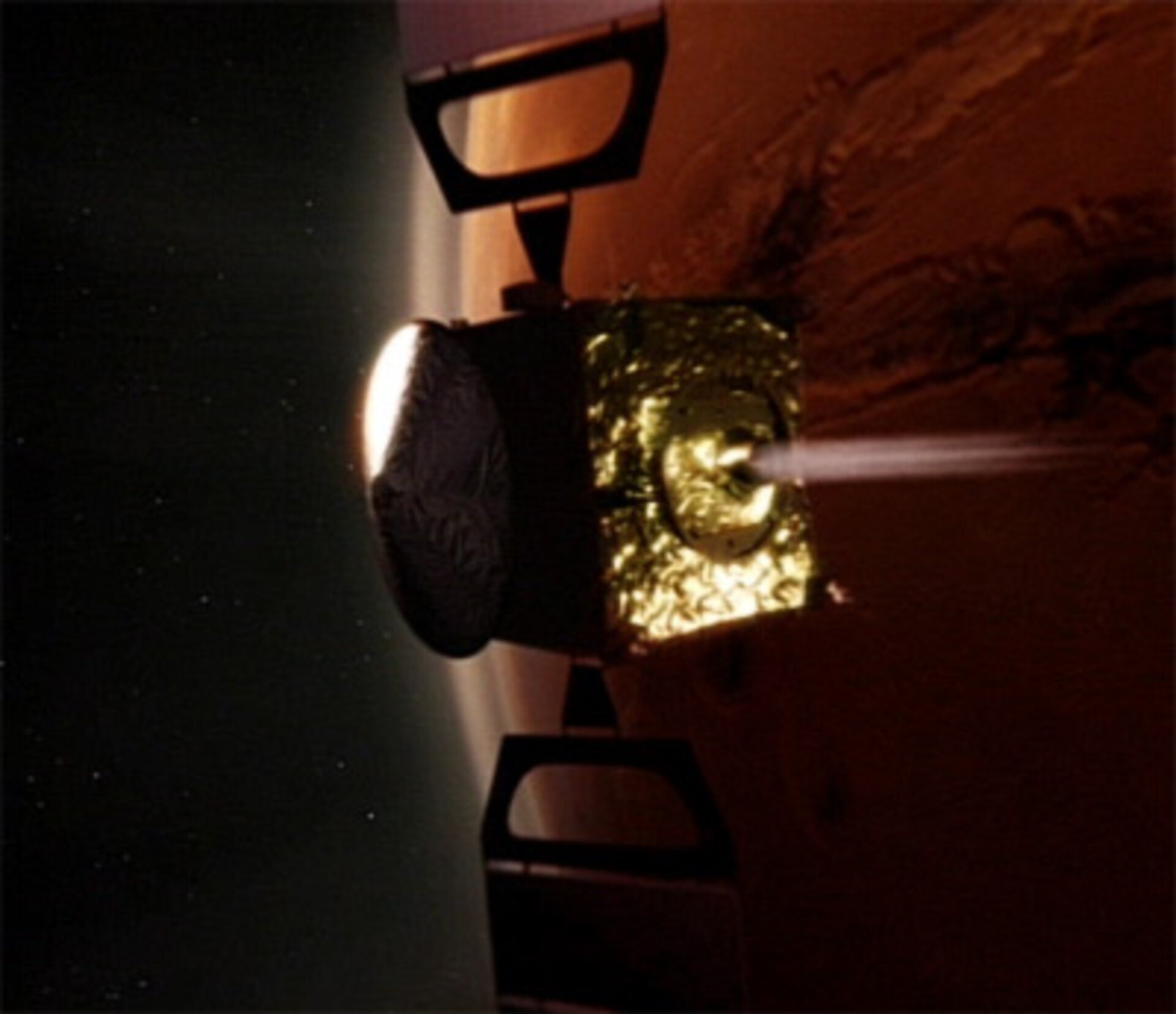Closing in on the Red Planet
At 14:13 CET, ESA’s Mars Express spacecraft successfully executed an essential planned manoeuvre to reduce its orbit around the Red Planet.
A five-minute burn of its main engine brought Mars Express from a high point of 190 000 kilometres to 40 000 kilometres, with a lowest point of about 250 kilometres.
Mars Express will reach its final operational orbit of about 11 000 kilometres by 300 kilometres towards the end of the month after two more scheduled orbit adjustments (using main engine burns) on the nights of 6/7 and 10/11 January.
Today’s key move enables ESA to pursue its Mars mission as planned. Firstly, scheduled scientific observations can begin mid-January and, secondly, the search for the Beagle 2 lander will become much more accurate.

On 7 January 2004, at 13:15 CET, the lowest point of the Mars Express orbit will be as close as 315 kilometres to the landing area of the still-silent Beagle 2.
The NASA Mars Odyssey orbiter and several radio telescopes on Earth have been unable to obtain a signal since Christmas, but chances will rise with the approach of the 'mothership' to its 'baby' Beagle 2. Mars Express and Beagle 2 are the only end-to-end tested systems, giving ESA more confidence of establishing a contact with the lander.
On 4 January, ESA specialists are meeting with Beagle 2 staff at ESA’s European Space Operations Centre in Darmstadt to define a strategy for modes of interaction between the ESA orbiter and the lander.
Today’s manoeuvre was another step towards the European exploration of Mars, ensuring both orbiter operations as planned and a precise search of the Beagle 2 lander. ESA is looking forward to an exciting Mars exploration in the next months.








